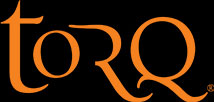With the advances in cycle simulation computer programs like Zwift, training indoors is becoming increasingly popular and we want to clear up any confusion over the kind of hydration and nutrition you should be using.
It wasn’t long ago that a ‘turbo trainer’ as they were once exclusively called came out of the cupboard as a last resort, because it was snowing outside or because your coach had set you a specific interval training session that had to be controlled and fine-tuned for power output. Oh haven’t times changed? With the advent of smart trainers and advanced computer programming, riding indoors has become so immersive that, well, sometimes it doesn’t even feel like you’re cycling indoors anymore!
And this is why so many people are now inadvertently under-fuelling their indoor sessions. Gone are the days where you simply jump on the turbo for a quick, hot and painful workout where the only nutritional concern is hydration – we’re all now doing some seriously lengthy workouts indoors and on-the-bike nutrition needs to be looked at with a fresh pair of eyes.

It’s for this reason that we’ve put together the TORQ Commandments. You might have noticed that we’re quite good at systemising nutrition at TORQ, which is why we developed the TORQ Fuelling System and TORQ Recovery System. Hopefully the infographic at the top of this page similarly clarifies which TORQ products you should be using and when for indoor training. This graphic can also be download as a PDF by clicking HERE and by all means you can print it out and share the link if you would like to. The QR codes on the pdf are also clickable if you’re viewing on a digital device, making navigation around the document easy. Although we refer to ‘indoor training’ on the graphic, this structure also applies to outdoor training or mix of indoor and outdoor training. We’re focussing on indoor training in particular here for the reasons already explained – because the overall physical load of these sessions is currently often overlooked.
Essentially, a long indoor session has exactly the same fuelling and recovery requirements as a long outdoor session and in practically every case the hydration demands will be higher. Keeping your body as cool as possible with a good fan and fresh air is essential, but however good your domestic cooling set up is, you will be losing a lot of fluid through perspiration when training indoors.
The infographic leads to 3 possible outcomes depending on the frequency, intensity and duration of your workouts and you can either scan the QR codes with your smartphone or click on one of the links below:
Use TORQ Hydration & TORQ Recovery
Follow the TORQ Fuelling & Recovery Systems
Scanning a QR code has become much easier recently – just hold your camera up to the QR code as if you’re about to take a picture and it will give you the option to open the link. Remember, a PDF of the graphic at the top of this page can be found HERE.
For further comprehensive information on indoor training, take a look at our Indoor Training Resources. If you have any questions about this infographic or anything raised in this article, please don’t hesitate in contacting us at enquiries@torqfitness.co.uk or phone 0344 332 0852. TORQ is a Fitness Consultancy, so we’re well equipped to address any questions you have.





